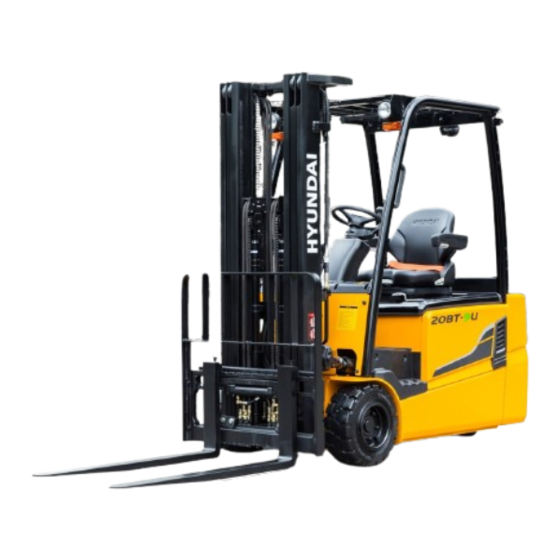
Table of Contents
Advertisement
Quick Links
1. GENERAL SAFETY RULES
1. Daily inspection -------------------------------------------------------------------------------------------------------- 1-1
2. Do's and don'ts --------------------------------------------------------------------------------------------------------- 1-2
3. Seat belts ------------------------------------------------------------------------------------------------------------------ 1-3
4. No riders ------------------------------------------------------------------------------------------------------------------- 1-4
5. Pedestrians --------------------------------------------------------------------------------------------------------------- 1-5
6. Operator protection -------------------------------------------------------------------------------------------------- 1-6
7. Fork safety ---------------------------------------------------------------------------------------------------------------- 1-7
8. Pinch points -------------------------------------------------------------------------------------------------------------- 1-8
9. Travel ------------------------------------------------------------------------------------------------------------------------- 1-9
10. Grades, ramps, slopes and inclines ----------------------------------------------------------------------- 1-10
11. Tip over --------------------------------------------------------------------------------------------------------------------- 1-11
12. Surface and capacity ----------------------------------------------------------------------------------------------- 1-13
13. Parking ---------------------------------------------------------------------------------------------------------------------- 1-14
14. Lifting, jacking and blocking ------------------------------------------------------------------------------------ 1-15
15. Loading and unloading by crane ---------------------------------------------------------------------------- 1-20
1. Loose loads -------------------------------------------------------------------------------------------------------------- 2-1
2. Long and wide loads ------------------------------------------------------------------------------------------------ 2-2
3. Rear swing ---------------------------------------------------------------------------------------------------------------- 2-2
4. Low overhead clearance ----------------------------------------------------------------------------------------- 2-3
5. Fast turns and high loads ---------------------------------------------------------------------------------------- 2-3
6. Drop-offs ------------------------------------------------------------------------------------------------------------------- 2-4
7. Right-angle stacking ------------------------------------------------------------------------------------------------ 2-4
8. Chain slack --------------------------------------------------------------------------------------------------------------- 2-5
9. Pallets and skids ------------------------------------------------------------------------------------------------------ 2-5
10. Caution for electrical lines --------------------------------------------------------------------------------------- 2-6
11. Solid tire -------------------------------------------------------------------------------------------------------------------- 2-7
1. General locations ----------------------------------------------------------------------------------------------------- 3-1
2. Data/safety plates and decals --------------------------------------------------------------------------------- 3-2
3. Instruments and controls ----------------------------------------------------------------------------------------- 3-5
4. Instruments panel ---------------------------------------------------------------------------------------------------- 3-6
5. Operating switches and levers ------------------------------------------------------------------------------- 3-19
6. Seat adjustment ------------------------------------------------------------------------------------------------------- 3-23
7. Battery compartment access --------------------------------------------------------------------------------- 3-24
CONTENTS
CONTENTS
Advertisement
Table of Contents












Need help?
Do you have a question about the 15BT-9U and is the answer not in the manual?
Questions and answers